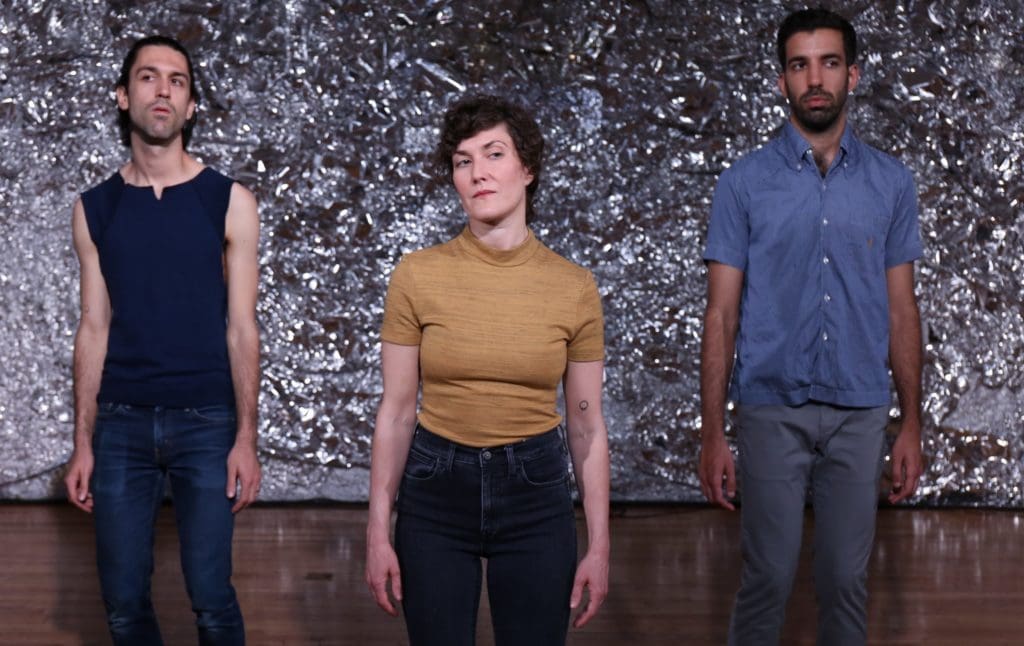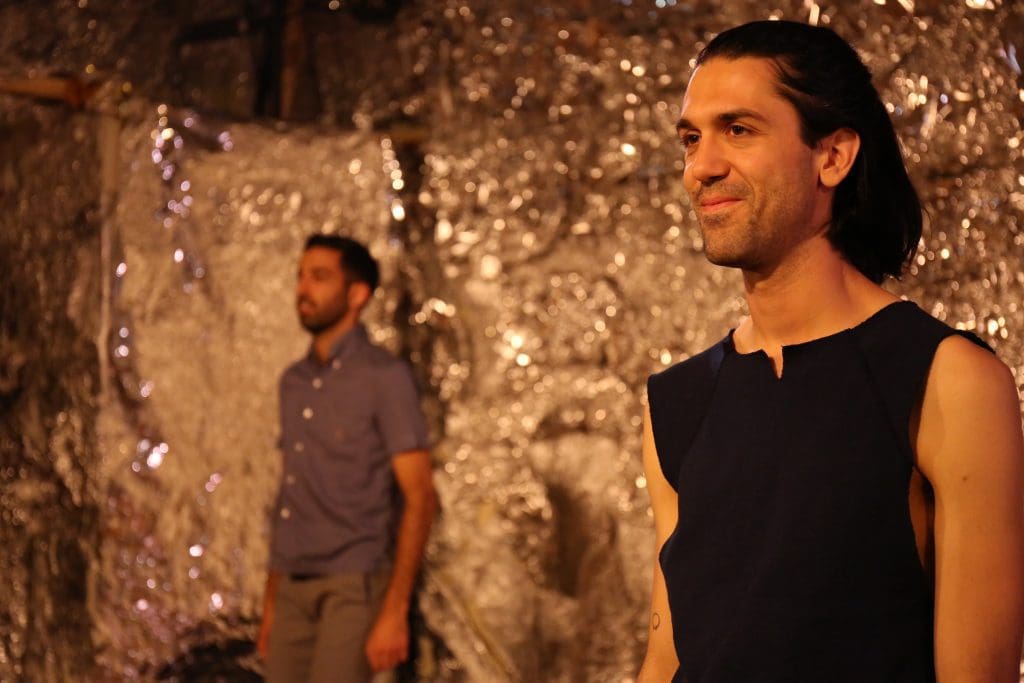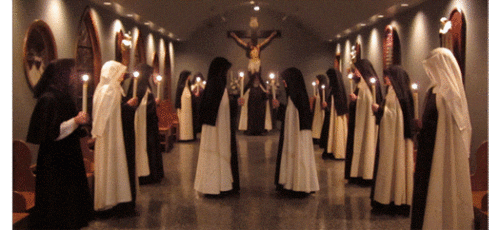We don’t exist without you: Interview with No Face Performance Group
Mark McCloughan and Jaime Maseda, who together are No Face Performance Group, were kind enough to sit down for a chat with us to talk about the THE TOP. What is THE TOP? The answer may be more complex than you realize. But the one thing we’re sure of is that it doesn’t exist without you.
FringeArts: How did the title THE TOP come about? And what was the moment when you realized, we can make a show of this?
Jaime Maseda: “The Top” is the name of a song that plays a prominent role in the piece. We lovingly ripped it off. Hopefully nobody comes for us. All jokes aside, the song’s title has always felt like an apt title. Its simplicity both belies and points towards the grandeur of the song, which is both minimalist and bombastic in its own right. The performance itself has minimalist elements for sure, but we’ve made a point of maintaining a wry and critical engagement with minimalism, which can be a rather oppressive ideology. What began as an exploration self-aware minimalist choreography became a celebration of and engagement in radical intimacy and empathy—albeit through a stripped down, simple gesture.
Mark McCloughan: The song entered the process completely randomly—one day, when we were working in the studio with Magda and Chelsea, Jaime put it on and made a performance proposal about how to interact with the song. It was captivating, and we immediately honed in on it as something to delve into more deeply. We had a sense that there was a piece there, and began exploring how to expand it. We added stuff, we made it more complicated, but nothing seemed quite right. There was this growing sense that the first proposal was more complete than we realized. But to think about making a whole piece based on this very simple initial idea was scary. Would it be enough for a piece? Would it hold the audience’s attention? Eventually, this became a sort of dare, both for us and for the audience. The dare: make it enough.
Jaime Maseda: Speaking for myself, I’m not sure there was a moment of confirming “oh, this works.” Which is for sure terrifying, but also a good sign—a sign that a project is worth pursuing. With a lot—if not all—of the work we’ve made over the past few years, there’s been a definite sense of “We have no idea if this structure succeeds.” And actually, a challenge we often end up giving ourselves is to create pieces that explore totally different measures of success. I think THE TOP is no different!
FringeArts: How is music used in THE TOP?
Mark McCloughan: The whole piece is inspired by music. The choreography takes cues from minimalist and pop music and uses these structural ideas to play with time and make the audience and performers aware of time’s passing, as well as its malleability.
Jaime Maseda: The way we incorporate music is pretty simple and becomes clear early on. One of its many functions is to narrow the performance and the audience’s focus down to a direct, unadorned engagement with us. That said, the song “The Top” is also really amazing and exciting and engaging and constantly revealing new layers of production and instrumentation. We can’t take credit for that (thanks, Francis), but hopefully our performance does the same.
FringeArts: What makes this work “once open, direct, intimate, and confrontational?”
Jaime Maseda: More than anything else, more than being a performance you come and watch, this piece is an invitation to engage in a specific interaction/relationship/experience with us as people and performers. There’s no “audience participation” per se, but we are definitely trying to de-escalate the tension around performer/spectator interaction—trying to cultivate an awareness of the invisible, electric back-and-forth between people who watch each other. At its best, really leaning into this bizarre relationship yields the magical, radical empathy and intimacy I mentioned before.
Mark McCloughan: The piece is very transparent. Nothing is going on that you can’t see. Or maybe a better way to put it: What you see is all there is. Early on in the piece, we try to establish a connection with the audience, showing them that we can see them, that we are acknowledging that they are watching. We try to make eye contact, and if someone smiles, we smile back. By demonstrating that there’s no boundary between the performance area and the audience, we hope to invite the audience to experience the performance in a different way than they might a performance that uses the convention of a fourth wall.
Jaime Maseda: There aren’t really any hard-and-fast methods we can apply beyond staying tethered to the present moment, not anticipating or “performing” a given interaction. Neither shying away from an interaction, nor holding onto one for the sake of it. Or sitting with an interaction longer than feels comfortable. Or cutting one off before it feels it has run its course.
FringeArts: Where does the humor come from?
Mark McCloughan: The humor comes from playing with expectation. Going back to the inspiration of pop music: there are many different types of pleasure at play in a great pop song. There’s the pleasure of repetition, of familiarity. There’s the pleasure of symmetry, of having an expectation about what will happen next fulfilled. I think that in truly great pop songs there are also other pleasures: unexpected adornments, structural gestures that subvert the traditional pop structure but still work beautifully, little oddities that are somehow both right and not right for the song. When we listen to a pop song, we expect certain pleasurable things, and the way the song does or does not dole out those pleasures becomes its signature, its personality. In this piece, we deploy humor by being very intentional about how we do or do not give the audience what they might want or think they want.
Jaime Maseda: I think each audience member’s individual discovery or journey of understanding the mechanics of the piece is a major source of pleasure. The choreography, though extremely simple, makes a point of playing with people’s expectations of or desires for the piece’s trajectory — sometimes to frustrating, sometimes to comic effect. To me there’s a very exciting interplay between the possibility that anything might happen and the realization that everything is already happening. And the realization that “everything is already happening” can mean both “There’s so much going on even though there’s nothing going on!” and “There’s nothing going on and that’s just going to keep on happening!”
FringeArts: What have you worked on most in fine-tuning THE TOP?
Jaime Maseda: Again, there’s not a ton we can do to prepare or rehearse, since so much of the piece depends on the intangible relationship with the audience. We definitely drill the choreography a ton. We watch each other, point out each other’s tendencies when engaging with viewers, trying to cultivate a sort of blank slate of presence. This goes back to the “Does this work?” question—even after the performance, it’s hard to evaluate.
Mark McCloughan: THE TOP doesn’t really exist without the audience. There’s set choreography, but in a way, that choreography is unimportant. We realized as we were setting the piece that there are an infinite number of ways we could have made the choreography to achieve the same effect. For me, the heart of the piece is in the exchange between us and those watching. The choreography is a tool that supports the engagement between audience and performer. It fills the space and is precise, but also something that is able to recede into the background so that this connection, this exchange can take place.
Thanks Mark and Jaime!
THE TOP ran at FringeArts May 31-June 3 2017.
Interview by Josh McIlvain.




